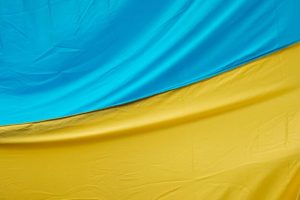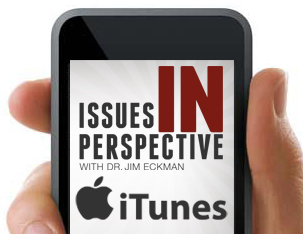The Lessons Of History And Trump’s Sellout In Ukraine
Mar 22nd, 2025 | By Dr. Jim Eckman | Category: Featured Issues, Politics & Current EventsThe mission of Issues in Perspective is to provide thoughtful, historical and biblically-centered perspectives on current ethical and cultural issues.

When President Trump was running for a second term in 2024, he promised to end the Ukraine war “in 24 hours.” Of course, that did not happen, but now we are seeing how he seeks to end this atrocious war, now over 3 years old. As the Wall Street Journal editorially observed, Trump’s plan is a “tilt toward a Ukraine sellout.” As a student of history, I believe it also ignores one of the profound lessons of history from the 1930s in Europe.
Several important primary observations:
- Joe Biden left Trump a mess in Ukraine. Early in the war the Ukrainians fought the Russians back from Kyiv, Kharkiv and Kherson and later drove Mr. Putin’s Black Sea fleet into retreat. But “further counteroffensives were crippled by the U.S. failure to provide adequate or timely arms. The Biden policy boiled down to giving Kyiv just enough weapons not to lose in a rout but not enough to win. And never properly explaining to Americans the stakes or a strategy.”
- Trump is treating Putin and Russia unlike any other negotiating counterpart. Defense Secretary Pete Hegseth said Wednesday that Ukraine couldn’t join NATO and that returning to its borders before Russia’s first invasion in 2014 is “unrealistic.” This is not negotiation with Russia. This is giving into one of Putin’s key demands before discussions even begin.
- Trump seems to be excluding Ukraine as a negotiating party, much less partner. He announced his “peace” negotiation after a phone call with Putin and informed Ukraine President Volodymyr Zelensky after the fact. If Ukraine is going to cede territory to Russia, it needs credible security guarantees so Putin or his successor can’t rearm and invade again in the future. “Kyiv will need a continued supply of foreign weapons and its own robust military industrial base. And if NATO is out, the U.S. could reassure by moving the bulk of its European military presence from Germany to Poland and letting American contractors help the European peacekeepers in Ukraine.”
Trump has mimicked Russian propaganda by claiming Ukraine had started the war with Russia and that Kyiv is little better than the Kremlin because it hasn’t held a wartime election. Ukraine President Volodymyr Zelensky replied on Wednesday that Mr. Trump was living in a “disinformation space.” Trump escalated the dialogue, as he usually does, calling Mr. Zelensky a “dictator,” and suggesting Ukraine’s leader snookered the U.S. into supporting a war “that couldn’t be won, that never had to start.” Mr. Zelensky “refuses to have Elections, is very low in Ukrainian Polls, and the only thing he was good at was playing Biden ‘like a fiddle.’” Putin’s war of conquest started three years ago this month when Russian troops rolled over the border and tried to capture Kyiv. Putin is waging what Johns Hopkins scholar Hal Brands calls (in his new book, “The Eurasian Century”) “a quasi-genocidal war.” “The war began not because Mr. Putin had legitimate security fears—but because the aging former KGB agent wants to reassemble most of the Soviet empire he saw crumble as a young man. The U.S. president has now chosen to throw America to Putin’s side and is more than willing to see this war end on Russian terms.”
What then is Putin’s real aim in invading Ukraine and committing such acts of barbarism in Ukraine? Tom Nichols correctly observes that “Putin is not a product of ‘Russia’ or even of Russian nationalism. He is, in every way, a son of the Soviet Union. He is a man of ‘the system,’ the kind of person who, after the fall of the U.S.S.R., was sometimes called a sovok, which translates roughly into ‘Soviet guy’—someone who never left the mindset of the old regime. (This is a man who, for example, changed the post-Soviet Russian national anthem back to the old Soviet musical score, with updated words.) . . . His worldview is a toxic amalgam of Russian historical romanticism and Soviet nostalgia; he clearly misses being part of an empire that dared to confront the West and could make the rest of the world tremble with a word from Red Square. . . . He sees himself as the heir to Peter the Great and Stalin, because the greatest days of his life were the mid-1970s, when he was in his 20s and the Soviet Union he served so faithfully looked to be ascendant over the declining United States.”
- What has kept the peace in Korea for more than 70 years is a U.S. deterrent force backing a formidable South Korean military. But the US is providing no deterrent to Russia. Would the U.S. really let Putin roll over European forces in Ukraine in the future? As the Wall Street Journal argued, “The risk here is that deterrence isn’t divisible. Mr. Trump is wrong if he thinks letting Russia dominate Ukraine will result in less U.S. involvement in Europe or enhance deterrence in the Pacific. The U.S. will end up spending far more on defense and deploying more troops in Europe to defend Poland, the Baltic states, and NATO commitments. If he abandons Ukraine, he’ll soon find that China is even more emboldened to take Taiwan.” Trump has to decide if he wants an honorable peace in Ukraine, or risk his own Afghanistan or Vietnam.
How should we think about the situation in Ukraine and Trump’s efforts to end the Ukraine war, apparently on Russia’s terms? Anne Applebaum argues that “For eight decades, America’s alliances with other democracies have been the bedrock of American foreign policy, trade policy, and cultural influence. American investments in allies’ security helped keep the peace in formerly unstable parts of the world, allowing democratic societies from Germany to Japan to prosper, by preventing predatory autocracies from destroying them. We prospered too. Thanks to its allies, the U.S. obtained unprecedented political and economic influence in Europe and Asia, and unprecedented power everywhere else. The Trump administration is now bringing the post–World War II era to an end.”
Finally, columnist and conservative advocate George F. Will puts all of this in historical context. He writes, “The road to war in 1939 was paved with spurious ‘realisms.’ Today, the road to a wider war is being paved by U.S. leaders’ ignorance of history, and by nonsense from people who are paid to make sense of things.” He takes us back to 1938, which has clear echoes of what is happening today in Europe: In 1938, the leaders of four nations—Germany, Italy, France, Britain—settled the fate of a fifth, Czechoslovakia. “Realism” dictated its dismemberment. A Czech official argued: “The Germans will be able to cut our country in half within a day.” British Prime Minister Neville Chamberlain’s aide: “I am not responsible for the realities of geography. . . . Ninety percent of your country will remain intact and you will not be invaded.”
Will cites two comments by the Trump administrations that evidence an ignorance of history:
- In Munich, “a city closer toUkraine than Washington is to Atlanta, Vice President JD Vance told Europeans that the principal security threat they face is insufficient free speech, exemplified particularly by the refusal of other German political parties to govern in coalition with Alternative for Germany, a fascist-adjacent party sympathetic to Ukraine’s would-be executioner, Vladimir Putin.”
- Vance spoke two days after President Donald Trump’s 90-minute phone conversationwith Putin. The day of that call, Defense Secretary Pete Hegseth declared it “unrealistic” to hope for peace negotiations through which Ukraine regains pre-2014 territories (before Russia’s seizure of Crimea) or gains NATO membership. “But Kaja Kallas, Estonia’s former prime minister and the European Union’s foreign policy chief, tartly questioned the realism of giving the Russians ‘everything that they want even before the negotiations have been started.’”
In 1938, hours before Chamberlain signed the Munich agreement, an aide told him that Hitler “plans a war of conquest to gain living space for the German people.” Hitler had said so. Chamberlain: “You need to learn a few lessons in political reality.” Realities such as the reluctance of democratic publics to face unpleasant realities. Particularly for the benefit of (as Chamberlain had described the Czechs) people in “a far away country,” “of whom we know nothing.” We know Putin’s thinking about who should be Russians, and what Russia should be. He has told us. Trump says he does not care “much about anything” other than “peace.” “Peace for our time,” Chamberlain said triumphantly “when he landed in London from Munich. Peace lasted 336 days, until Sept. 1, 1939, the first of the European war’s 2,077 days.”
It has been said that the one thing we learn from history is that we don’t learn anything from history. That seems most appropriate to apply to the Trump administration.
See George F. Will in the Washington Post (17 February 2025); Anne Applebaum in The Atlantic Daily (13 February 2025); Wall Street Journal editorials (14 and 20 February 2025); and Tom Nichols in The Atlantic Daily (19 February 2025).


